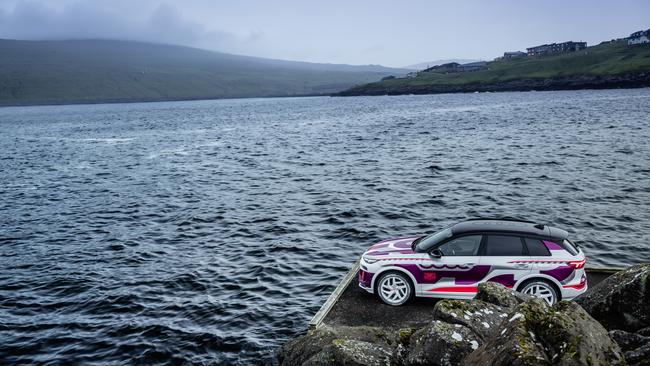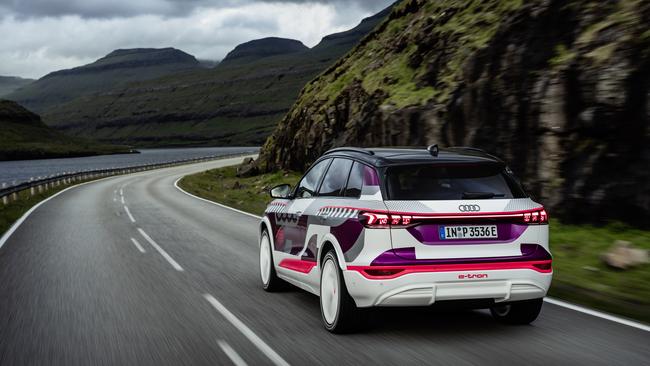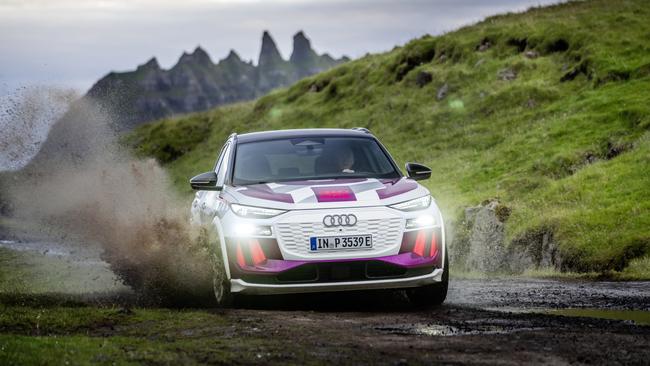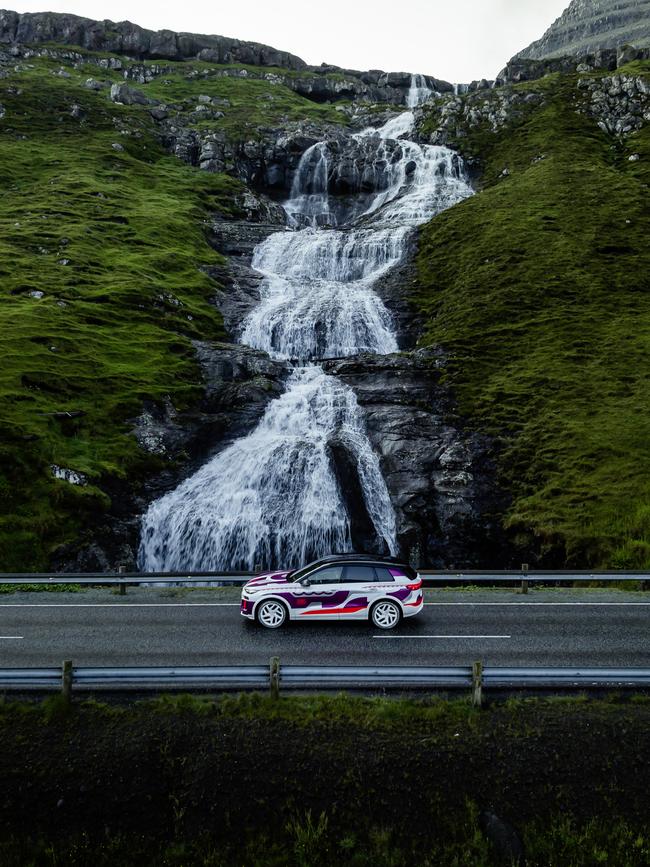Audi Q6 e-tron review: There's a lot riding on this EV
Audi’s EV ambitions in the premium SUV sphere mean that there is a huge importance attached to the Q6 e-tron, set for launch in 2024.

Just as the “all for one, one for all” rallying cry spurred the famous Three Musketeers as they swept into the fray, the same declaration is driving the future of one of Europe’s largest and most successful car-making conglomerates as it fights to head off a threat emerging from deep in its heartland of Germany.
Next year, the giant VW-Audi group will carry shared electrification into the sales battle in premium EV segments against market upstart Tesla, which flicked the “on” switch to its Giga Berlin-Brandenburg factory just over a year ago with the ambition of churning out one million cars per year.
It’s a battle that the established car-makers have been building towards for years, as Tesla has increasingly cut, and eaten, its lunch. Taking its manufacturing facility to Berlin really is a thumb in the eye for the giant German industry.

The sharpest multipurpose blade in the VW-Audi armoury is its new PPE (Premium Platform Electric) modular architecture, which will be seen first in the Audi Q6 e-tron SUV, set for launch in 2024 and which will be shared with its stablemate, the first all-electric Porsche Macan.
Both these SUVs are much the same size but PPE’s advantage is that it’s a scalable approach, like the one that has been used for years in the company’s combustion-engined cars.
It works even better in an EV because the PPE’s underfloor battery is a genuine, thermally managed platform, which can be tweaked for a variety of performance levels for models with either rear- or all-wheel drive, and across different segments.

The PPE’s compact 800-volt battery system was chosen to deliver on fast-charging expectations, with the promise of a 25-minute energy “fill” time from 5 to 80 per cent.
The Q6 e-tron’s power electronics will be silicon-carbine super-conductors, there will be up to 270 kiloWatts of input charge power offered, and a real-world range of up to 700km, depending on specification.
A strong visual road presence is assured with 22-inch wheels on a wide track, short overhangs, and heavily-raked front pillars for a super-slippery drag co-efficient of 0.22Cd.

While much of the detail of the Q6 e-tron is shrouded in secrecy, there is no denying the huge importance attached to this car in Audi’s EV ambitions in the premium SUV market.
Every participating brand wants a bigger share of that booty while those, like Audi, with combustion models that already have a healthy share, need to protect and grow their patch.
The Q6 e-tron is Audi’s EV replacement for the popular combustion-engined, mid-sized Q5, under the company’s stated corporate intention to produce only electric cars by 2029.

The Q5 is already the aspirational, high-quality family SUV of the segment, in many ways the logical, go-to European package of Goldilocks-type size. Audi’s goal will be to safely keep and transition those customers as it shifts smartly to full electrification.
To the existing Q5 customer, that EV shift has to be seamless – and with plenty of upside through added space, driveability, comfort and features.
New Audi boss Gernot Döllner was the head of product strategy for the entire VW-Audi Group. Such is the importance of this car – and the RS performance-branded models that will follow – that he’s been asked to sharpen his focus on Audi alone to take advantage of the fresh four-ringed opportunities ahead.

The digital PPE development program started back in 2018 and all models will share the same software “stack” produced by VW-Audi’s independent CARIAD division, which will deliver all the required connectedness, mobility services, intelligent cabinware and ultimately, automated driving.
CARIAD’s over-the-air software updates will keep the Q6 e-tron at the sharp end of the premium SUV market for years and allow unique elements to be introduced that will differentiate the cars and their customer-tailored characteristics.
The look and feel of how the information is packaged and delivered will be shaped to suit the brand, and the customer can shape it even further.


